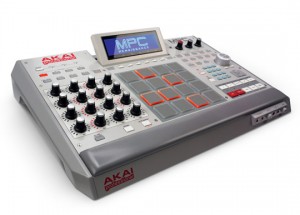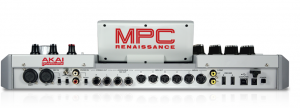Words by: Steven Williams for soundplate.com
The Akai MPC Renaissance: the Music Maker’s Machine. One of the most widely anticipated products to be released in the least year its the latest in a long line of successful products to bare the heavy MPC reputation; therefore the renaissance really was a brave move from Akai. MPC models have been the product of producers and beat makers for decades from a variety of genres of music from dance to hip-hop and more, thanks to their remarkable sound quality, precision timing and intuitive interface. Famously DJ Shadow produced the entire Entroducing album on one MPC unit thanks to its intuitiveness and remarkable versatility. So I went to find out if the Renaissance has lived up to the hype and just what makes it so special. The answer lies with the combination of embracing arguably any producer’s most essential tool; the laptop.
When I first used the MPC Renaissance I knew it would be difficult to transcribe its feel and swagger into words which all its specs and videos can’t do justice. Despite its solid structure it feels really luxurious and sleeker than its photos would have you believe. The controls on the unit such as the jog dial and trigger pads feel really stable and weighted. At first I thought the padded leather strip was there just for visual reasons but after a while of playing I realised that Akai have even thought to make it as comfortable as they can for the long periods in the studio, a nice little touch.
If you have used an MPC before there’ll be no great surprises in terms of the interface, I found this reassuring and slightly relieving as there’s not much you could do to improve upon it, with its typical punchy sound and instantaneous timing, thankfully everything’s where and how it should be. But it is a new unit therefore it does have new features such as the long-samples can be streamed from the hard-drive, and the software gives you detailed visual feedback so you can precisely edit samples or notes. But the most exciting feature for me was the ability to change the sound out-put from clean standard audio to imitate the crunchy retro sound from the early MPCs such as the iconic MPC-60. It’s a simple yet brilliant idea and one I believe will attract a lot of older customers to the Renaissance.
Like I’ve said the main feature of the MPC Renaissance is the ability to integrate it seamlessly to a computer via the MPC software. It can be connected through a VST, AU or RTAS plug-in, it’s also compatible with all previous MPC file format which is great news if you’re upgrading you’re old MPC unit.
Akai seem to have perfectly captured what the MPC represents, and its no wonder it’s receiving the attention it is. It’s arguably the best MPC Akai have produced and that’s a bold statement, but one I’m willing to stand by. Like I said before, without trying it for yourself, its difficult to describe its feel but watch this video and you’ll see what I mean.
Words by: Steven Williams for soundplate.com
Buy From Dawsons Buy From Juno


